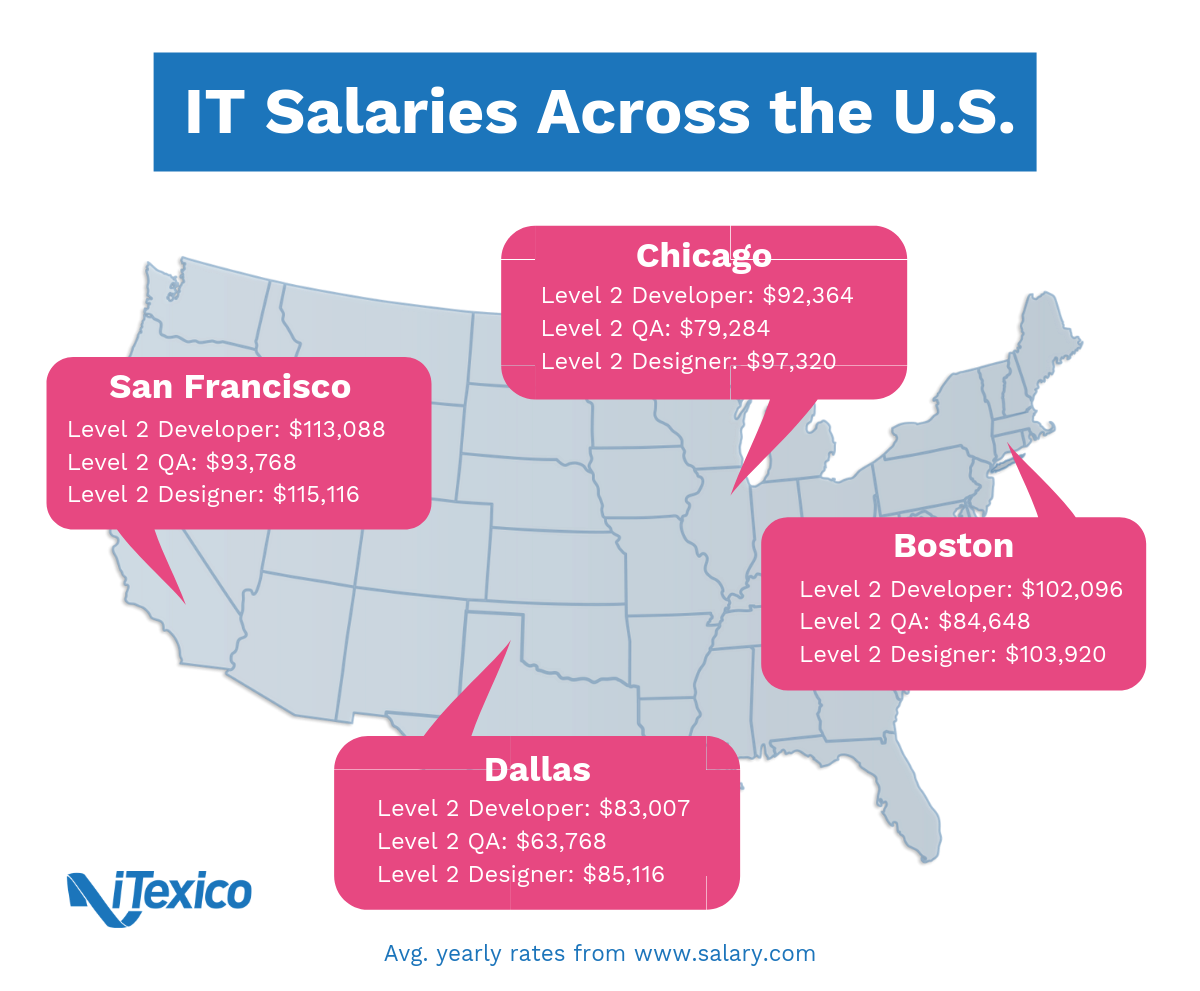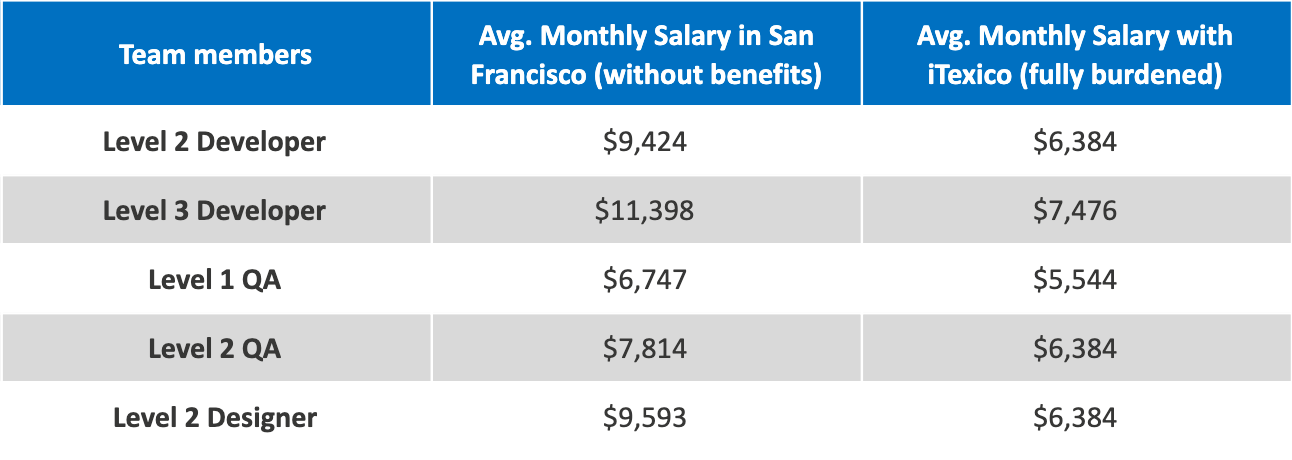How to Handle the Crisis of the Software Developer Shortage in the U.S.
It seems as if there’s some new, horrid crisis looming over the populace with every passing day. The media is afire with controversy, horror stories, and pessimism is rampant. We are simple human beings, and it’s getting harder and harder to distinguish which of these new crises are the real issues to confront. We are not built to handle this much onslaught of negativity on a daily basis.
But we are built to withstand great strain. As challenging as these modern times may be, we tend to get through them together.
Unfortunately, the lines of news gravitate toward flair and the big picture, whether or not what they’re reporting constitutes the level of attention they give it. Then, while the next spectacle makes headlines, events that actively impact our nation and world plot on their courses largely unnoticed.
It’s not a pleasant job, but we need to see them as they are in the light of day if they’re going to be addressed. Due to this, we need to not only acknowledge the shortage of software developers. We need to discuss how it affects the marketplace and how to fix this problem.
U.S. Tech Talent Shortage in Numbers
The tech industry talent shortage is a cancer not just to the economy of the United States but to thousands of businesses worldwide. Without the manpower to support this vital industry, every country on the planet is experiencing slower adoption ratings of more advanced technologies such as AI, machine learning, the cloud, and others.
You may be wondering, why is there a shortage of software developers? Well, according to multiple sources on software developer statistics, there are just not enough people in America becoming computer science graduates.
The U.S. Bureau of Labor Statistics states that by 2020 there will be 1.4 million computer science-related jobs available to the public with only 400,000 computer science graduates to fill those roles.
As a result, developers have the freedom to be highly selective about where they work, creating bidding wars amongst companies and a massive shortage of software engineers and developers with computer science degrees.
Adding fuel to the fire, the early years of Baby Boomers retiring are upon us, leaving companies scrambling to find the next generation of local leaders or looking for talent outside of home. As of now, the American Immigration Council estimates that 20 to 25% of the STEM workforce in the U.S. is composed of immigrant workers, worsening the talent supply crisis by recently shrinking immigration numbers. Korn Ferry compounds the issue with the statement that, if the U.S. doesn’t address its STEM talent deficit soon enough, it’s likely to experience the greatest unrealized output worth of over $162 billion by 2030. This has huge implications across multiple fields of science and technology and shows that these problems extend well beyond it being just a shortage of programmers and software engineers.
By the numbers? There’s a storm on the horizon, and our nation has not battened down the hatches enough to sufficiently weather it.
Top Challenges Faced by Employers
There is a lack of software engineers and developers that make it difficult for employers to hire talent. However, that’s only part of the story.
The talent pool for reliable software developers is shrinking, and it’s becoming self-evident employers are increasingly caught up with the hassle of sifting through the labor pool for qualified individuals. There are any number of categories that software developers can lose the employer’s consideration for a project, but there are five in particular that occur most frequently:
- Lack of Experience
- Lack of Technical Skills
- Lack of Soft Skills
- Lack of Formal Education
- High Salary Demands
The more frequently these issues crop up, the more difficult it becomes for employers to uncover the right software developer to fit their needs.
Lack of Experience
Unfortunately for many employers, many of the current software developers are still new to the marketplace. We can all sympathize with this position, considering we all found ourselves in it at one point or another in our lives. As gratifying as it might be to help a new upstart software developer, it’s unfeasible to expect consistent high-quality products if they don’t have the history to show for it. Software developers without the reputation and portfolio to prove their mettle are a gamble more often than not.
There are times and places where inexperience serves as a platform. It may be for a small project, because newer software developers are relatively more affordable, or perhaps they came recommended by a reliable contact. Circumstances like these, however, are outliers when you’re considering the health and well-being of your company projects. There are a lot of developers without the proper experience, and it can be a challenge to sort through them all and find the one you want.
Lack of Technical Skills
Not every software candidate is going to possess the qualifying skills necessary. Trouble as it may be, technical skills determine the quality of your software developers, directly affecting their ability to accomplish your goals. Not only that, but a developer that’s particularly skilled in one field may be lacking in another.
Depending on what your project entails, the array of employees with sufficient technical skills is dynamic. Simply put, it’s hard to be certain about what an individual knows and is capable of without putting them to the test. You can imagine how that chews up time. Finding the right person with the right technical skill set is a search process that doesn’t always end up with the perfect candidate in your lap.
Lack of Soft Skills
Soft skills are the butter to technical skill’s bread. You could find the perfect candidate with all the technical skills you need and you’d still be out of luck because of their lack of soft skills that make them an asset to the workplace. How is their teamwork? Their communication? Problem solving? Work ethic? Interpersonal skills? Flexibility?
The quality of a software developer’s ability to function in tandem with their co-workers and superiors is a huge indication of how effective they are in the workplace. Software development, especially for large-scale projects, is not a solo game. Humans are diverse, and so companies are finding a lot of software developers who do not have the right soft skill set to effectively work in their company environment.
Lack of Formal Education
Did you know that the majority of schools in America don’t teach computer science? Only 35% of high schools offer it as a course, and in 22 states they don’t even contribute to the student graduating i.e. math or science credits. At the local level, only 14 states have adopted computer science standards even though 58% of all new STEM jobs are in computing. Despite being one of the largest job fields on the planet, the education system has yet to reach a consensus that computer sciences are an integral part of the academic supplement.
Without formal education, there are many software developers who are self-taught. Admirable as that may be, without the structure of an educational system for guidance, there’s no guarantee that their capabilities and skill sets will incorporate the necessary qualities for a strong developer candidate.
High Salary Demands
The talent shortage results in a skewed dynamic between organizations and their software developers. With less competition vying for their work, the current pool of software developers are free to demand high salaries in exchange for their services. Granted, developers should be compensated fairly for their work, but companies should be secure that their investments will pay off as well.
You don’t want to pay a lot of money for a subpar product. With all these previous challenges factored in, the tech talent shortage risks companies hiring underwhelming developers at prices that don’t suit their competencies. Until this IT shortage is fixed, the current talent pool will continue to deliver sloppy candidates at too high a price.

How Outsourcing Can Help US Businesses Reach Their Digital Innovation Goals Without Being Affected by Talent Shortage
For the past ten years or so, software developers have been at the top of the hardest to fill jobs in the United States. Therefore, it’s no surprise companies in the U.S. have been leveraging nearshore and offshore outsourcing options for more than a decade. Companies like IBM, HP, and Oracle have launched their own offices in Mexico in search of top software engineering and PM talent in major tech cities like Guadalajara, otherwise known as Mexico’s own Silicon Valley.
The local talent shortage is the main reason why U.S. companies look for talent outside their borders, and the second most important reason is the high cost of local talent. As estimated by Glassdoor, the average annual base salary of a software developer in the United States is $83,197. The US Labor Department, however, believes it's $100,080. In Silicon Valley, the same developer can cost an average of $133,010. With Nearshore vendors, a developer with the same skills can cost on average $76,608 annually, but fully burdened (including all taxes and benefits).
Let’s compare salary rates of a typical software development team in San Francisco VS Nearshoring in Mexico:

Total salaries plus benefits of a 5 member team, for 3 years in San Francisco: $2,438,812
Total salaries plus benefits of a 5 member team, for 3 years with iTexico: $1,158,192
Why Outsourcing to Mexico Makes Sense
While Offshore Outsourcing offers many benefits to U.S. companies struggling to fill their lines with top skilled talent. While there’s the debate on whether offshore or onshore offers the greatest benefits, there is an option that’s even more attractive and convenient: Nearshore Software Development in Mexico. Innovation is accelerating in the United States at a faster rate than talent can be developed, creating the need for tech companies to seek out foreign talent and alternative, up-to-date solutions.
Summed up, there are five good reasons for you to outsource to Mexico:
- Availability of Talent
- Cost-Competitiveness
- Time Zone Alignment
- Cultural Alignment
- Strong IP Protection
Availability of Talent
Mexico is churning out massive amounts of highly qualified software developers with ease. While the United States is currently experiencing a talent shortage, Mexico has virtually no end to skilled workers looking for a job. With such a large pool to draw from, U.S. companies can take advantage of having their pick from reliable employees to increase productivity and profit margins.
Cost-Competitiveness
Nearshore outsourcing companies handily beat out onshore outsourcing competitors when it comes to obtaining a cost-effective partnership. We already know that Mexico has a surplus of talent, but by pairing this wealth of capability with drastically lower prices, you’re getting a better bang for your buck that American companies could never match.
Time Zone Alignment
Not only can you capitalize on a cost-effective opportunity, you won’t even need to concern yourself with time zones. India previously had the biggest presence in outsourced software development work by far. However, ever since Mexico demonstrated a remarkable increase in their talent pool, they beat out preference for Indian outsourcing companies for one good reason: time. They are hours off our schedules, making communication difficult, slow, and laborious. Mexico, being in our time zone, doesn’t have that issue.
Mexico’s shared time zones, along with its vicinity, makes onsite meetings much simpler. The closeness of the U.S. and Mexico allows for cheaper travel and less jet lag on arrival and departure. Being in our same time zone lowers costs and facilitates communicates across the board.
Cultural Alignment
We’re much more familiar with Mexican culture than anything overseas. With cultural alignment, communication and teamwork can be standardized, smoothing out the workplace. It’s easier working with a culture that lines up more easily with yours than one that doesn’t.
Strong IP Protection
The UMSCA Agreement was paramount in guaranteeing a modicum of quality pertaining to products between America, Canada, and Mexico. Prior to its establishment, there was no guarantee that anything coming out of any of the three mentioned countries could be considered of acceptable quality. However, now with its regulations in place, it guarantees that all included countries have a minimum standard for their products to meet. This agreement included laws that guarantee strong IP protection.
Putting It Together
Not to be dramatic, but the U.S. has a huge problem on its hands regarding its software developer shortage. A 4-year college degree alone doesn’t fit the bill anymore, applicant’s need to have an assortment of skills, and they really just need to be a team player. Luckily, Mexico has all of these qualities in excess. Filling your spaces with local talent may be hard, but it gets a lot easier when you look over the border.
iTexico serves as a conduit that helps organizations grow by matching their open talent needs to high-skilled Nearshore software development teams through Innovation Centers of Excellence. Contact us today to see how we can help you overcome the problems of hiring software developers. We’re here to help your business grow and solve problems.
Hand-Picked Related Reads For You

Nearshoring in Mexico – Right Talent, Right Time, Right Now
READ MORE

Is Mexico The New India?
READ MORE

iTexico: Top Mobile Development Company
READ MORE




Post Your Comment Here